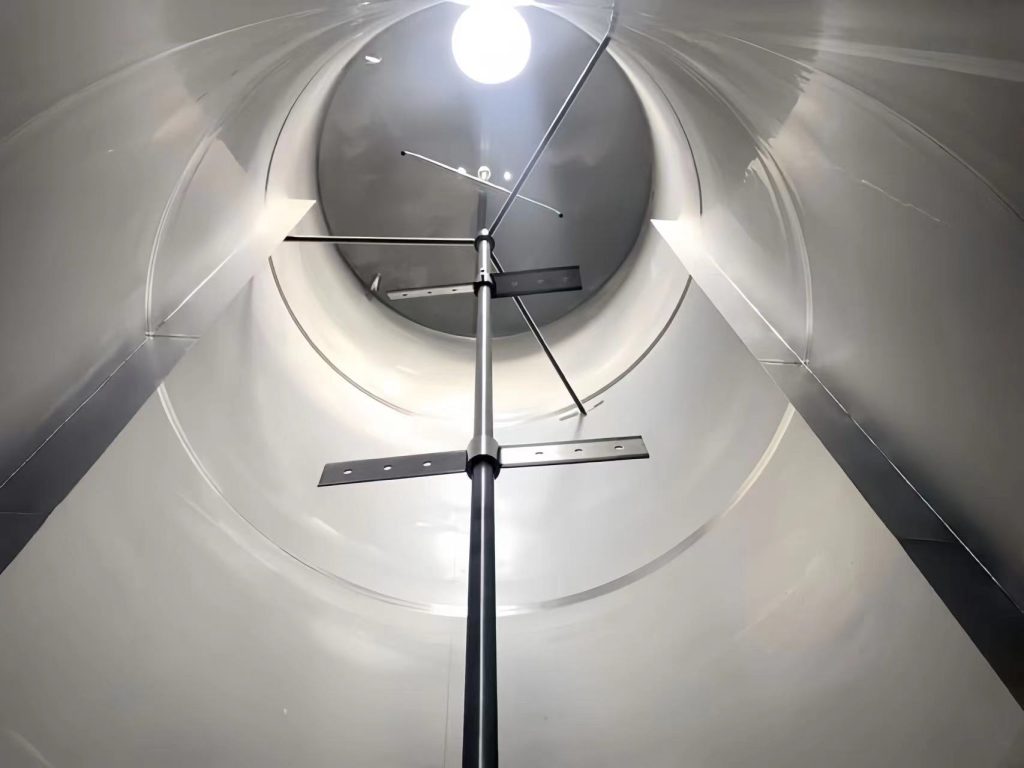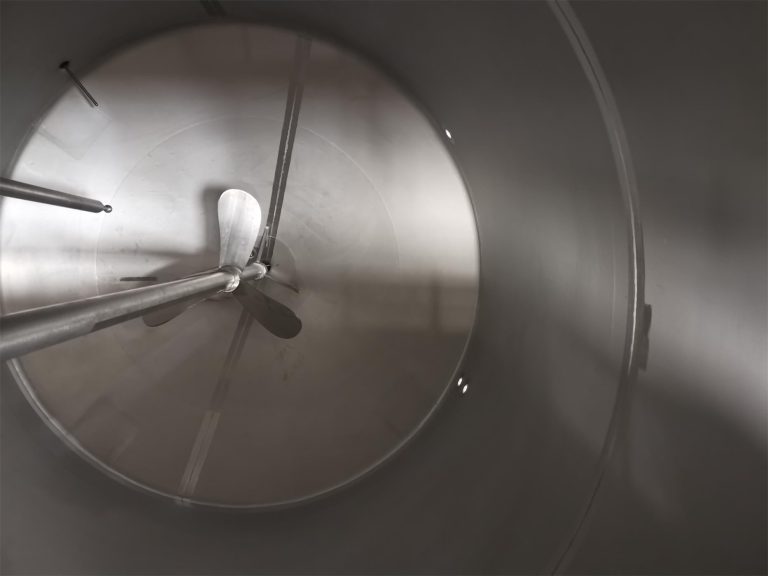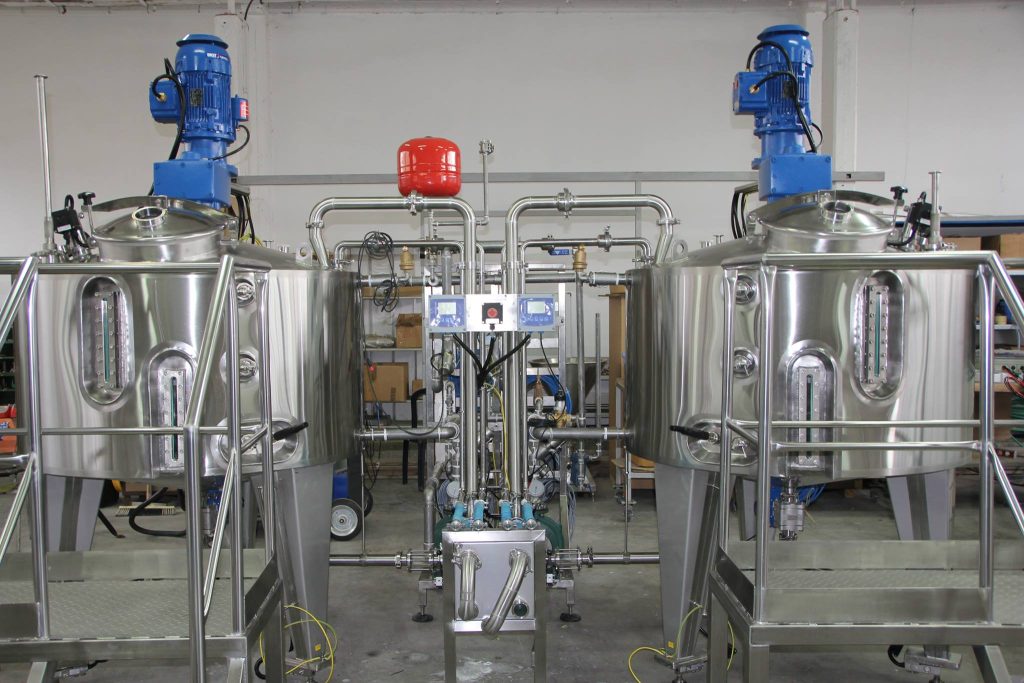Introduction

Chemical mixing tanks are integral components in various industrial processes, crucial for combining different chemical substances to achieve a desired reaction or property. They play a significant role in industries such as pharmaceuticals, chemicals, food and beverage, and cosmetics. Understanding the key features and benefits of chemical mixing tanks is essential for optimizing operations and ensuring safety and efficiency. This comprehensive guide will explore these aspects in detail, providing valuable insights into the functionality and advantages of chemical mixing tanks.
Understanding Chemical Mixing Tanks
Chemical mixing tanks are specialized vessels designed to blend chemicals efficiently and safely. They come in various sizes and configurations, tailored to specific industrial requirements. These tanks are equipped with several features to facilitate the mixing process, ensure uniformity, and maintain the integrity of the chemical substances involved.
Types of Chemical Mixing Tanks
Chemical mixing tanks are categorized based on their design, application, and the type of mixing required. Common types include:
- Batch Mixing Tanks: Used for processing discrete batches of chemicals.
- Continuous Mixing Tanks: Designed for ongoing, uninterrupted mixing processes.
- High-Shear Mixing Tanks: Equipped with high-shear mixers to handle viscous materials.
- Tank Blenders: Incorporate blending mechanisms for thorough and consistent mixing.
Key Features of Chemical Mixing Tanks
Chemical mixing tanks come with various features to enhance their performance and safety. Some of the key features include:
- Agitation Mechanisms: Different types of agitators, such as turbines and propellers, are used to ensure proper mixing.
- Temperature Control Systems: Includes heating and cooling jackets to maintain the desired temperature.
- Material of Construction: Tanks are often made from stainless steel, glass-lined steel, or other materials resistant to chemical reactions.
- Safety Features: Includes pressure relief valves, explosion-proof motors, and leak detection systems.
- Cleaning Systems: Automated cleaning-in-place (CIP) systems to ensure hygiene and prevent cross-contamination.
Benefits of Using Chemical Mixing Tanks
Chemical mixing tanks offer several benefits that enhance industrial processes. Understanding these benefits can help businesses make informed decisions about their mixing equipment.
Efficiency and Consistency
One of the primary benefits of chemical mixing tanks is their ability to provide efficient and consistent mixing. This is crucial in ensuring that the final product meets quality standards and performs as expected. The advanced agitation mechanisms and precise control systems in modern mixing tanks contribute to this consistency.
Safety and Compliance
Chemical mixing tanks are designed with safety in mind. They are equipped with various safety features to handle hazardous chemicals and prevent accidents. Compliance with industry regulations and standards is also ensured through the use of robust materials and safety mechanisms.
Flexibility and Customization
Chemical mixing tanks offer flexibility in their design and operation. They can be customized to meet specific process requirements, including varying sizes, agitation speeds, and temperature controls. This versatility makes them suitable for a wide range of applications and industries.
Cost-Effectiveness
Investing in high-quality chemical mixing tanks can lead to long-term cost savings. Efficient mixing processes reduce waste and improve product yield, which can lower operational costs. Additionally, the durability and reliability of these tanks minimize maintenance and replacement expenses.
Key Considerations When Choosing a Chemical Mixing Tank
Selecting the right chemical mixing tank involves several considerations to ensure optimal performance and safety. Key factors to consider include:
Chemical Compatibility
The material of the mixing tank must be compatible with the chemicals being processed. This prevents corrosion, contamination, and degradation of the tank. Stainless steel and glass-lined steel are commonly used materials due to their resistance to chemical reactions.
Tank Size and Capacity
The size and capacity of the tank should align with the production requirements. Larger tanks are suitable for high-volume processes, while smaller tanks are ideal for batch processing. It is important to consider the scalability of the tank to accommodate future growth.
Agitation Requirements
Different processes require different types of agitation. The choice of agitator, such as a paddle, propeller, or high-shear mixer, should be based on the viscosity and properties of the chemicals being mixed. Proper agitation ensures uniform mixing and effective processing.
Temperature Control Needs
Temperature control is crucial for certain chemical reactions. Tanks equipped with heating or cooling jackets help maintain the desired temperature, ensuring optimal reaction conditions and product quality.
Maintenance and Cleaning
Ease of maintenance and cleaning is an important factor to consider. Automated cleaning-in-place (CIP) systems can simplify the cleaning process, reducing downtime and ensuring hygiene. Regular maintenance schedules should also be established to prolong the lifespan of the tank.
Applications of Chemical Mixing Tanks
Chemical mixing tanks are used in various industries and applications. Understanding these applications can provide insights into the versatility and importance of these tanks.
Pharmaceutical Industry
In the pharmaceutical industry, chemical mixing tanks are used for the production of medications and vaccines. Precise mixing is essential for maintaining consistency and efficacy. Tanks in this industry often require high levels of hygiene and sterilization.
Chemical Manufacturing
Chemical mixing tanks play a crucial role in the production of various chemicals, including specialty chemicals, detergents, and polymers. The ability to handle corrosive and reactive substances is important in this sector.
Food and Beverage Industry
In the food and beverage industry, chemical mixing tanks are used for blending ingredients, flavoring, and processing. Compliance with food safety standards and the ability to handle different viscosities are key considerations.
Cosmetics and Personal Care
Chemical mixing tanks are used in the cosmetics industry for the production of lotions, creams, and other personal care products. Consistency and quality control are essential in this sector to meet consumer expectations.
Common Issues and Troubleshooting

While chemical mixing tanks are designed for reliability, certain issues may arise during operation. Understanding common problems and their solutions can help maintain optimal performance.
Leaks and Seals
Leaks can occur due to worn-out seals or improper installation. Regular inspection and maintenance of seals and gaskets are essential to prevent leaks and ensure proper containment of chemicals.
Agitation Problems
Inadequate mixing can result from malfunctioning agitators or incorrect settings. Checking the agitator for damage and adjusting the speed or type of agitation can address these issues.
Temperature Fluctuations
Temperature fluctuations can affect the quality of the mixed product. Ensuring that temperature control systems are functioning correctly and calibrating them regularly can prevent these issues.
Conclusion
Chemical mixing tanks are vital components in a wide range of industrial processes. Their key features, such as advanced agitation mechanisms, temperature control systems, and safety features, contribute to efficient and consistent mixing. Understanding the benefits and considerations associated with these tanks can help businesses select the right equipment for their needs, ensuring safety, quality, and cost-effectiveness.
By considering factors such as chemical compatibility, tank size, and agitation requirements, businesses can optimize their mixing processes and achieve better results. With proper maintenance and troubleshooting, chemical mixing tanks can provide reliable performance and support various industrial applications.
FAQ
What are the main types of chemical mixing tanks?
The main types of chemical mixing tanks include batch mixing tanks, continuous mixing tanks, high-shear mixing tanks, and tank blenders. Each type is suited for different applications and mixing requirements.
How do I choose the right chemical mixing tank for my needs?
Consider factors such as chemical compatibility, tank size and capacity, agitation requirements, temperature control needs, and ease of maintenance when choosing a chemical mixing tank.
What materials are commonly used for chemical mixing tanks?
Common materials used for chemical mixing tanks include stainless steel, glass-lined steel, and other materials resistant to chemical reactions. The choice of material depends on the chemicals being processed.
What are the safety features of chemical mixing tanks?
Safety features of chemical mixing tanks include pressure relief valves, explosion-proof motors, leak detection systems, and robust construction materials to handle hazardous chemicals.
How can I maintain and clean a chemical mixing tank?
Maintenance and cleaning involve regular inspection of seals and gaskets, checking agitator functionality, and using automated cleaning-in-place (CIP) systems for hygiene. Establishing a maintenance schedule can prolong the tank’s lifespan.

